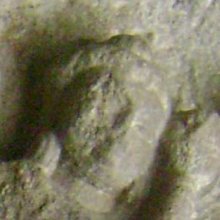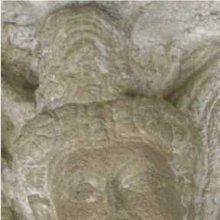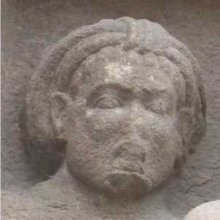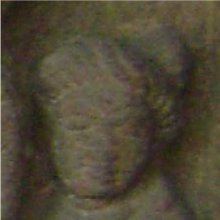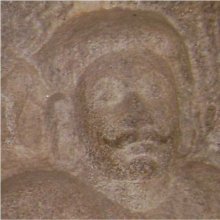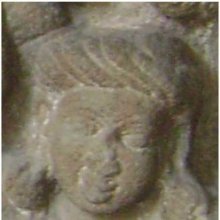Turban: 2 definitions
Introduction:
Turban means something in Hinduism, Sanskrit. If you want to know the exact meaning, history, etymology or English translation of this term then check out the descriptions on this page. Add your comment or reference to a book if you want to contribute to this summary article.
Images (photo gallery)
(+13 more images available)
In Hinduism
Natyashastra (theatrics and dramaturgy)
Source: Shodhganga: Elements of Art and Architecture in the Trtiyakhanda of the Visnudharmottarapurana (natya)Turbans form an important part of ornamentation (in Indian Dramas), as conveyed through the Aṅgaracanā division of Āhāryābhinaya: one of the four divisions of Abhinaya or “ways to convey or represent one’s emotion to others”, according to the Viṣṇudharmottarapurāṇa, an ancient Sanskrit text which (being encyclopedic in nature) deals with a variety of cultural topics such as arts, architecture, music, grammar and astronomy.—According to the Viṣṇudharmottarapurāṇa the characters from lower cast like Daityas, Dānavas, Rākṣasas, Pannagas etc. are categorised as having the right to put turbans on their heads.

Natyashastra (नाट्यशास्त्र, nāṭyaśāstra) refers to both the ancient Indian tradition (shastra) of performing arts, (natya—theatrics, drama, dance, music), as well as the name of a Sanskrit work dealing with these subjects. It also teaches the rules for composing Dramatic plays (nataka), construction and performance of Theater, and Poetic works (kavya).
Shilpashastra (iconography)
Source: Shodhganga: Elements of Art and Architecture in the Trtiyakhanda of the Visnudharmottarapurana (shilpa)The Turban is denoted by the Sanskrit term Uṣṇīṣa and represents the associated decoration used for ministers, astrologers and family priests, following the principles of ancient Indian Painting (citra), according to the Viṣṇudharmottarapurāṇa, an ancient Sanskrit text which (being encyclopedic in nature) deals with a variety of cultural topics such as arts, architecture, music, grammar and astronomy.—In the Viṣṇudharmottarapurāṇa, the rules of Painting of different classes have been elaborately discussed. Like cloths, accessories of different character also vary in their pictures. The ornaments of ministers, astrologers and family priests should not be very gaudy and they should have uṣṇīṣa i.e., turbans in their heads instead of crowns in their picture. The portrait of merchants also should have turbans in their heads.

Shilpashastra (शिल्पशास्त्र, śilpaśāstra) represents the ancient Indian science (shastra) of creative arts (shilpa) such as sculpture, iconography and painting. Closely related to Vastushastra (architecture), they often share the same literature.
See also (Relevant definitions)
Full-text (+292): Ushnisha, Colonduka, Veshtana, Patta, Shiraska, Veshtaka, Mandila, Murdhaveshtana, Nirushnisha, Shiroveshtana, Shiroveshta, Shirastra, Pagadi, Pagadabanda, Veshta, Tivata, Mundasem, Shemala, Shirapenca, Saveshtana.
Relevant text
Search found 112 books and stories containing Turban; (plurals include: Turbans). You can also click to the full overview containing English textual excerpts. Below are direct links for the most relevant articles:
Cosmetics, Costumes and Ornaments in Ancient India (by Remadevi. O.)
2.1. Upper Garments (a): Head Dress: Veṣṭana < [Chapter 2 - Costumes]
2.1. Upper Garments (a): Head Dress: Uṣṇīṣa < [Chapter 2 - Costumes]
2.24. Sacrificial Dress < [Chapter 2 - Costumes]
Pallava period (Social and Cultural History) (by S. Krishnamurthy)
Head-dress of Men (Turban) < [Chapter 4 - Material Culture of the People]
Head-dress of Children < [Chapter 4 - Material Culture of the People]
Head-dress of Men during the Pallava period < [Chapter 4 - Material Culture of the People]
Garga Samhita (English) (by Danavir Goswami)
Verse 1.12.13 < [Chapter 12 - Description of Śrī Nanda’s Festival]
Verse 2.8.25 < [Chapter 8 - Description of Seeing Lord Kṛṣṇa]
Verse 3.2.12 < [Chapter 2 - The Great Festival of Śrī Girirāja]
Vinaya Pitaka (3): Khandhaka (by I. B. Horner)
On rejection of all dark green < [8. Robes (Cīvara)]
Eight channels for the accruing of robes < [8. Robes (Cīvara)]
Second recitation section < [20. Nuns (Bhikkhunī)]
The Linga Purana (by J. L. Shastri)
Chapter 13 - Glory of Tatpuruṣa < [Section 1 - Uttarabhāga]
Chapter 14 - Origin of Aghora < [Section 1 - Uttarabhāga]
Chapter 37 - The mode of gifting the golden cow along with gingelly seeds < [Section 2 - Pūrvabhāga]
The Mahavastu (great story) (by J. J. Jones)
Chapter XXV - The Buddha’s visit to Veśālī (Vaiśālī) < [Volume I]
Chapter XXI - The birth of the Buddha Dīpaṃkara < [Volume I]
Chapter I - The birth of Gotama < [Volume II]
